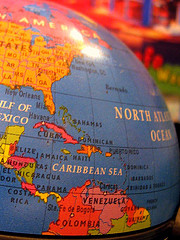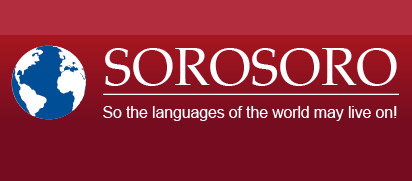Print  |
|


Haitian Creole: a slow gain in acceptance
Posted by Fritz Berg Jeannot on May 27, 2011
By Fritz Berg Jeannot, educator and specialist in French literature and linguistic, educational and cultural policies for the Imaginescence research and development group at Port-au-Prince, Haiti.
 Mother tongue of all Haitians, Creole (over 8 millions speakers) demonstrated a serious deficiency in status right from the creation of the country in 1804: it was restricted to an informal usage while French, though only spoken by 5 to 10% of the population, became the formal language of the country.
Mother tongue of all Haitians, Creole (over 8 millions speakers) demonstrated a serious deficiency in status right from the creation of the country in 1804: it was restricted to an informal usage while French, though only spoken by 5 to 10% of the population, became the formal language of the country.
Underrated language
For a long time, Creole was not considered a language. The terms used to refer to it were usually disparaging: « patois », « dialect », « talk »… Banned from public usage, at church, in the media and at school, it was neither written nor codified back then. Rare attempts towards writing were conducted through random and French-grammar-based forms.
Creole was thus judged unfit to serve significant social functions, and not one Haitian citizen seeking recognition saw the need of a higher status for this language. Under such conditions, Creole unilinguals themselves ended up wishing for their children to learn French.
Creole in education
The idea of using Creole as a tool for education reaches back nearly two centuries, when in 1816, a first project of integration arose, although no follow-up is recorded. Then the idea reemerged in the 1930s and was defended as necessary and feasible, before being resumed by UNESCO in the 1950s.
Meanwhile (1930-1960), several researchers devoted study to the language, aiming to provide it with an orthography and to explore its forms and structures. This research contributed to create a science of creole, and to develop text books permitting Creole to be served as a training language.
Long ignored by the state, proposals of education in Creole began to inspire the interest of private groups who launched related education programs. These pilot experiments eventually reached the Ministry of National Education, which implemented the « Bernard reform » at the beginning of the 1980s, named after one of Jean-Claude Duvalier’s ministers. However, this formal introduction of Creole was negatively perceived by a part of the popular class, who saw it as yet another attempt by Haitian authorities to confine their children to a disparaged place.
Be that as it may, over the years Creole managed to gain ever-more currency in education programs, classrooms, schoolyards and the media, particularly the radio beginning in1986.

Wavering and ambiguous legal recognition
Haitian lawmakers had ignored Creole for 160 years, but following decades of silence, the 1964 Constitution introduced article 35: the official language status of French was confirmed, but the use of Creole was finally permitted in the legal sphere, yet only in certain « cases » and under certain « conditions », remaining rather vague. Thus all sorts of interpretations were allowed, including forgetting, too.
However, this article does stand as the tipping point of the language’s evolution in status, followed by the 1983 Constitution which raised it to the rank of co-national language, and in 1987 as co-official language, along with French.
Yet Creole will have to wait for other legal texts for its official legal recognition to evolve any further, above all regarding concrete measures of application of the laws which concern it. While is no shortage of laws in Haiti, alas, only their enforcement often fails to come through…
The role of writers in the recognition of Creole
Beginning the 1830s writers were confronted by the need for a language able to express the Haitian imagination. From the 19th century into the first half of the 20th century, advocates of such an ideal began to « Haitianize » French in the wording of their work, integrating numerous terms, phrases and lines in Creole.
Then during the 1950s a veritable form of Creole literature, with regular publications emerged: collection of poems (Diacoute, 1953; Rosaire couronne sonnets, 1964; Konbèlann, 1976), plays, etc.
Translations of world literature narratives as well as philosophical and political works also emerged: Antigone in Creole, 1953; Œdipe the King, 1953; Pèlen tèt, 1979; Prens la, 2009; Ti Prens la, 2010.
Relegated to the second tier for over a century, Haitian Creole thus benefited from the interest of writers, researchers, religious figures and educators. While, initiatives and positions contributed to the evolution of popular perception of the language, they never got rid of the early negative preconceptions.
The sociopolitical upheaval of the 1980s also favored its expansion, yet while its existence is far from threatened, Haitian Creole now suffers from competition with multiple international languages such as French, and in particular, English and Spanish.








